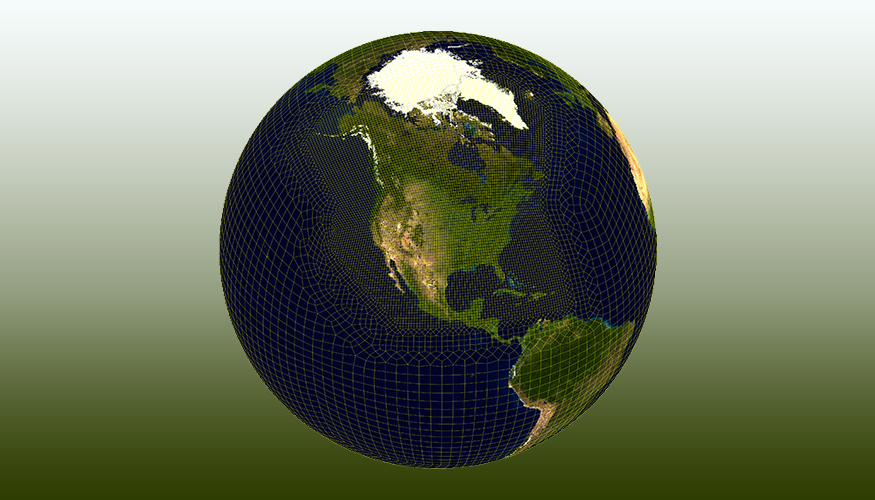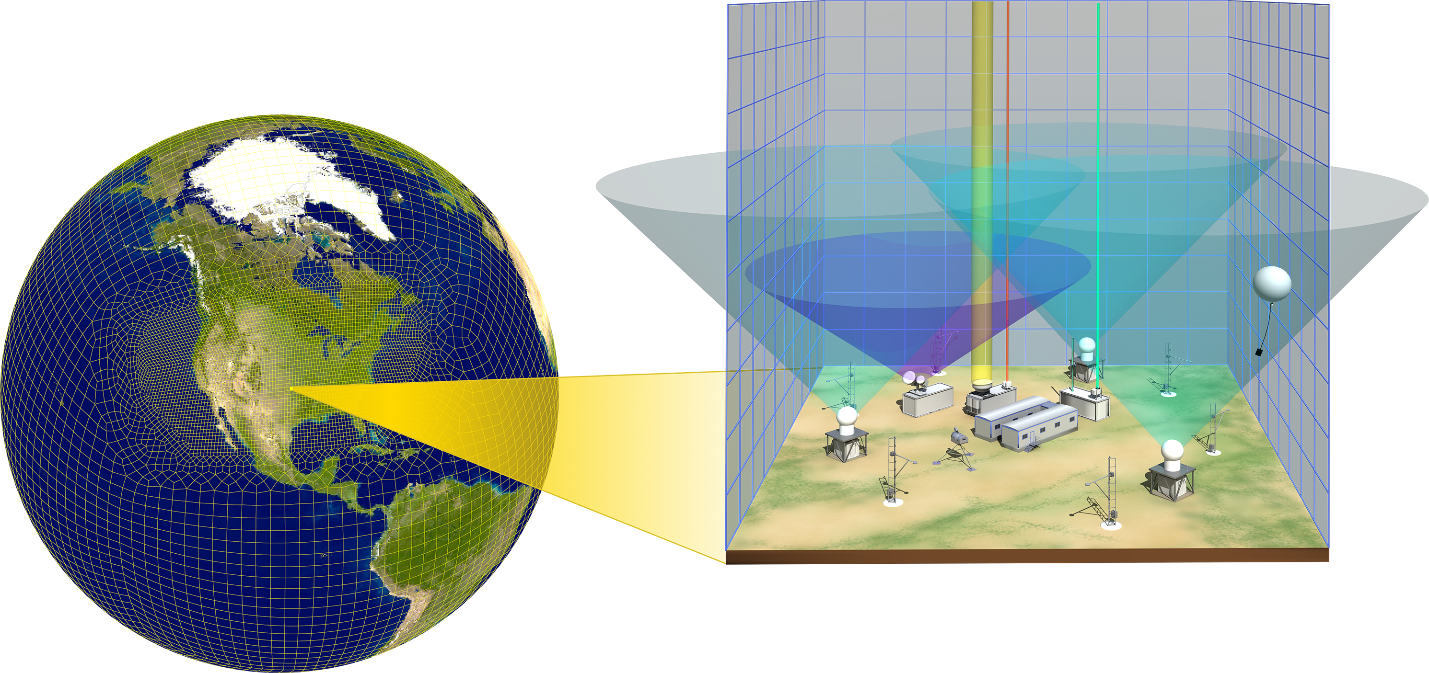E3SM Updated for Earth Simulations
Published: 17 November 2021
Improved DOE Energy Exascale Earth System Model two times faster than previous version

A new version of the U.S. Department of Energy’s (DOE) Energy Exascale Earth System Model (E3SM) is two times faster than its earlier version, released in 2018.
Earth system models have weather-scale resolution and use advanced computers to simulate aspects of Earth’s variability and anticipate decadal changes that will critically impact the U.S. energy sector in coming years.
Version 2 of the Energy Exascale Earth System Model (E3SMv2) was released to the broader scientific community September 28, 2021. The E3SM project is supported by DOE’s Office of Science in the Biological and Environmental Research program.
“E3SMv2 is faster and better than E3SMv1,” said Chris Golaz, an atmospheric scientist at Lawrence Livermore National Laboratory (LLNL) in California and lead of the E3SM Phase II Water Cycle Coupled Simulation Group. “It’s approximately twice as fast on identical machines, four times as fast on machines we have now, compared to what we had for E3SMv1. From one generation to another, earth system models typically become better but also quite a bit slower, so faster and better is significant.”
With its myriad interactions of atmosphere, oceans, land, and ice components, the Earth presents an extraordinarily complex system for investigation. Earth system simulation involves solving approximations of physical, chemical, and biological governing equations on spatial grids at resolutions that are as fine in scale as computing resources will allow.
“E3SMv2 allows us to more realistically simulate the present, which gives us more confidence to simulate the future,” said David Bader, an LLNL scientist and the lead of the E3SM project. “The increase in computing power allows us to add more detail to processes and interactions that result in more accurate and useful simulations than the previous version.”
For more information on E3SMv2, read the full LLNL news release.

E3SMv2 also works with the E3SM single-column model (SCM). An SCM encompasses a vertical atmospheric column over one model grid cell from the surface to the top of the atmosphere. SCMs are configured from an earth system model to simulate physical processes in the atmosphere.
Run in isolation driven by realistic boundary conditions, modelers can use SCMs to test if model errors are coming from their parameterizations—simplified representations of complex processes.
E3SM has a library of data cases from the Atmospheric Radiation Measurement (ARM) user facility to help with testing and evaluating parameterizations in the SCM. E3SMv2 works with the ARM test cases, which span multiple locations and meteorological and cloud regimes.
“Using the E3SM SCM to test and evaluate parameterizations provides a more direct path to improving E3SM because all the atmospheric processes in the SCM are represented in the same manner as in E3SM,” said L. Ruby Leung, E3SM chief scientist from Pacific Northwest National Laboratory in Washington state.
Keep up with the Atmospheric Observer
Updates on ARM news, events, and opportunities delivered to your inbox
ARM User Profile
ARM welcomes users from all institutions and nations. A free ARM user account is needed to access ARM data.


















